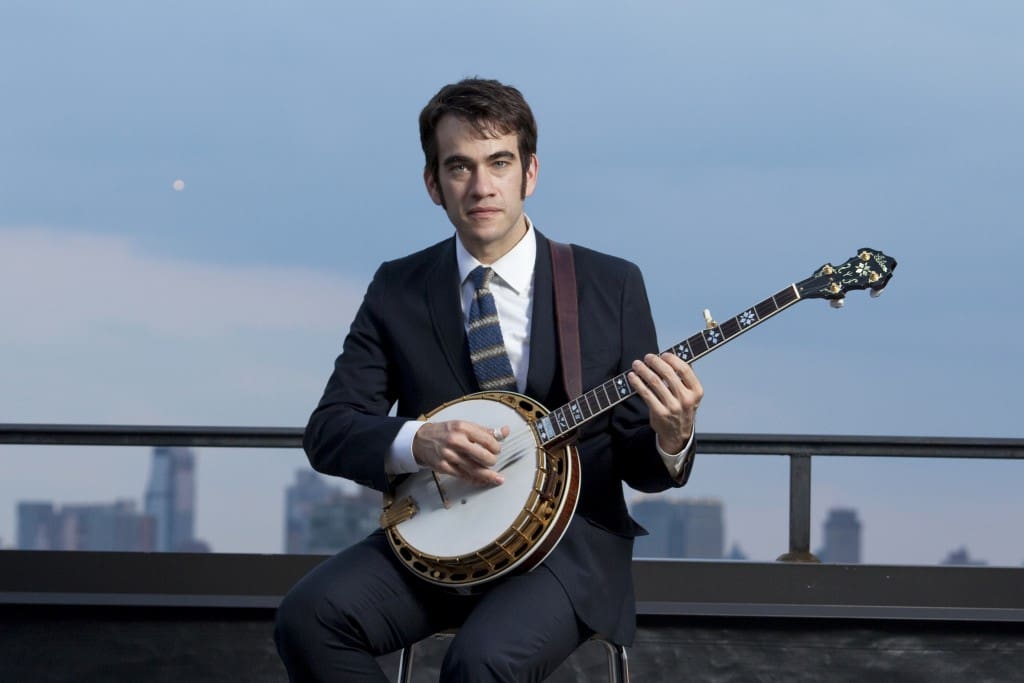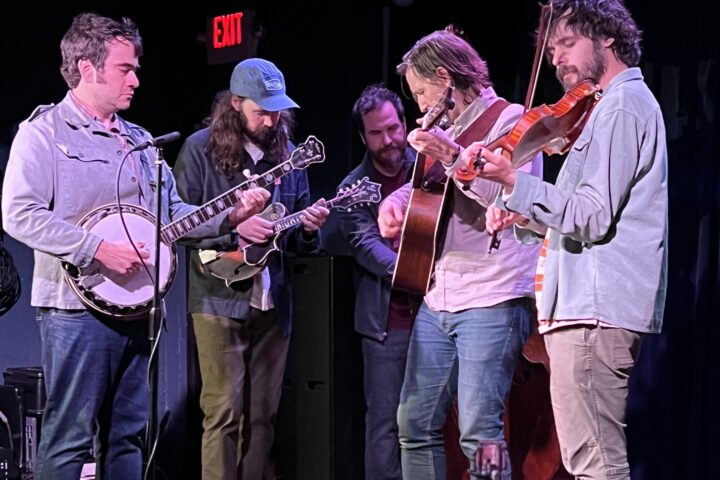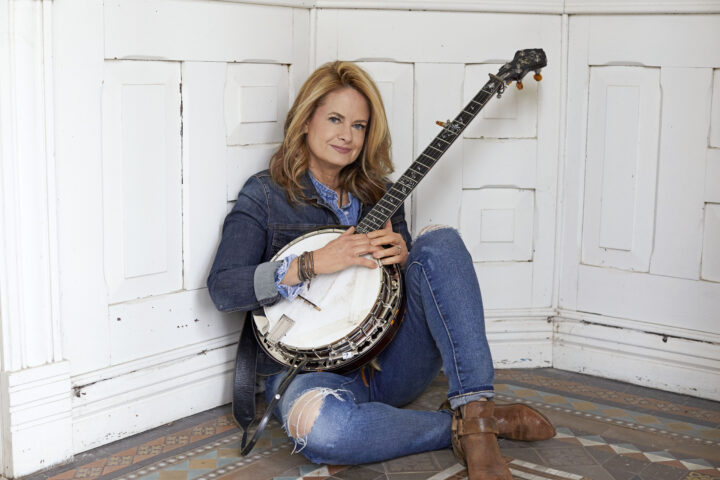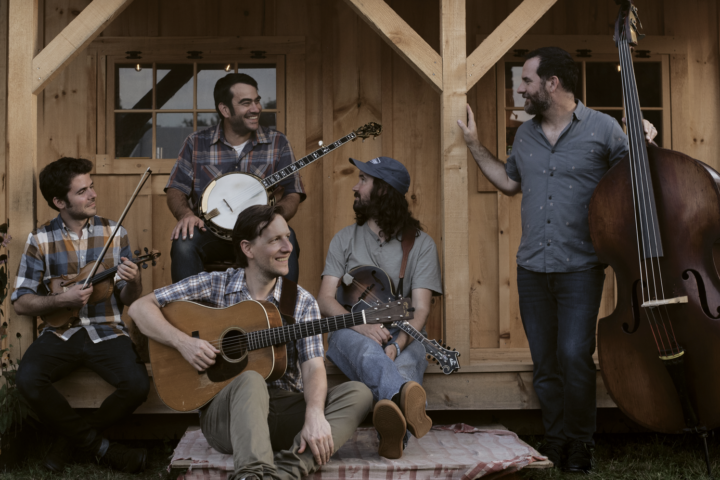When we last talked to Noam Pikelny of the Punch Brothers, he was the first-ever recipient of the $50,000 Steve Martin Prize for Excellence in Banjo and Bluegrass and the proud owner of a “crazy heavy” Gibson top-tension TB-7 banjo. On the cusp of his first-ever duo tour with fiddle virtuoso Stuart Duncan, we decided to check in with Pikelny and hear about how he prepared for this stripped-down shows and learn about why he has a new favorite banjo, a 1930 Gibson Granada.
Fretboard Journal: You and Stuart Duncan are about to go out on the road. I know Duncan played on your amazing Kenny Baker record (Noam Pikelny Plays Kenny Baker Plays Bill Monroe), but when did you first meet?
Noam Pikelny: Actually, I have vivid memories of meeting Stuart as a 10 year old. I think I was maybe 10 or 11 and I met him at the Old Town School of Folk Music when the Nashville Bluegrass Band played there. And that was the first time I ever saw him play live. I met him briefly there, but I’m sure he doesn’t remember that. I got to take a lesson with Alan O’Bryant, the banjo player from the Nashville Bluegrass Band.
As far as meeting and actually playing music, it was probably within the context of Telluride or something that we both ended up on stage somewhere. But the first time where we really got to play somewhere was when I made that record, Beat the Devil and Carry a Rail. That was four and a half years ago? It was pretty momentous to get to record with him. I remember the situation at the time was just an absolute coup because it was Gabe Witcher producing that record and Gabe kind of grew up idolizing Stuart Duncan. It was his fiddle hero. It was Gabe’s first job as a producer and there he was producing Stuart Duncan. It was pretty special.
FJ: What kind of material are you guys going to be doing on the road?
NP: Since we have made these two records together, we have all the material off of Beat the Devil and everything off of the Kenny Baker record in common. Not everything from those records is really well-suited for the duo format so that’s giving us an opportunity to round out the set with other material, some of it being new material that I’m working on and then just classic bluegrass or American songbook material that we’ve always been looking for opportunities to work up. People may not be aware of the fact that Stuart is a bonafide, legit, great singer. When you’re so good at one thing, like he is with the fiddle, it’s hard to pay attention to anything else, but he’s a great singer. I’ve always enjoyed hearing him sing. So Stuart is singing a bunch of songs and I’m even joining in on harmony on some material. He’s getting to revisit several of the country songs he used to play back in bars back when he was a teenager.
We sat down last week in Nashville and made a list of our favorite material and started brainstorming on things that would work in this format. It’s something very exciting for me to get to connect with him in such an intimate context, musically. It really raises the stakes for me as far as how I’m staying busy on stage. The roles of supporting the other musician become so much more crucial when you’re the only other guy onstage.
FJ: Banjo and fiddle duos tend to be either old-timey or the Ralph Stanley approach where the banjo player sits back a bit and lets the fiddle player do his thing. What is your approach for this tour?
NP: Well, there are several different approaches. We are definitely showcasing the classic fiddle-banjo duet style, which typically when you hear Earl Scruggs doing that with Benny Martin, usually the banjo is playing kind of more of a backup part. And every now and then the banjo will join in. We’re doing a modified version of that. When we first recorded that song “Pineywoods,” Stuart is taking a lead role and I’m taking a backup in the fiddle-banjo tradition, similar to Earl Scruggs. But one of the things that I love doing and did a whole lot of on the Kenny Baker record was learning the fiddle melodies note-for-note exactly as the fiddle player would play it, and in the same register. The sound of the banjo and the fiddle playing the melodies in unison together is a little bit of a departure from the classic fiddle-banjo approach, where the banjo may play the melody in a Scruggs style.
But as far as departing from that formula, we’re having to rely on different approaches. John Hartford was one of my favorite banjo players as far as the way he could back up a singer or a fiddle player in the absence of a bass or a guitar. He had a very clever and bouncy way of playing alternating bass lines on the banjo and emphasizing the part that a guitar or bass would typically do. That’s been part of the inspiration for this.
And then one thing that to me is really special about this that couldn’t happen outside of the duo format is that there are some very subtle sounds that come out of the banjo and fiddle that typically get covered up in the band context. The banjo is thought of as a fairly staccato instrument where you don’t have that much sustain. I’ve gravitated towards and set up my instruments to be a bit warmer and have some sustain because I like playing slower music. I need that for playing non-bluegrass music. That’s there on the instrument but you wouldn’t necessarily hear it in terms of slow, sustained backup similar to how a piano player might accompany a song; it would be getting covered up by the other low-mids of a guitar.
On some of the vocal music or waltzes that we’re doing, I get to play the banjo the way I would do it in a room, either playing solo or in this duo format. I don’t have to compete with another instrument in my register, sonically. That allows me to play the backup parts in ways that typically would never be effective; it would never come through. I think the same thing is true on the fiddle. A fiddle chop is a really cool sound. And you see fiddle players putting their instrument down and kind of chopping on it during a show, but that rarely gets heard. It’s a really cool texture. The nature of this being a pared down situation, people will get a glimpse of some of the real subttles of these instruments.

FJ: Instrument-wise are you using the same banjo you always have played?
NP: Well, almost exactly a year ago, I traded main axes [from a 1941 Gibson top-tension TB-7], which is something I never thought I would do and maybe even said in the Fretboard Journal that I would never do. But you never say never. In May 2013, I ended up getting a 1930 Gibson flathead Granada. It was a plectrum conversion. I’ve been playing that for most of the last year. I’m also carrying a Deering John Hartford model, which is tuned to open E-flat, it has much thicker strings, which I have for some of the songs. I really enjoy that instrument, the low-tuned Hartford banjo. It has this really cool combination of brightness but also richness because of register of the wound strings. It’s more staccato sounding than how I setup my normal five-string but because of the register and the string gauges, there’s this richness to it. Those are my two instruments for this tour. Stuart is also going to play some clawhammer banjo.
Due to the intimate nature of this, I think we’ll be able to pull it off with just one condenser mic on stage. That’s something I don’t get to do too much of anymore. As the Punch Brothers have expanded our audience we’ve had to compete with the volume considerations of festivals or lrager rooms. So the Punch Brothers have become fully plugged in, and I think we do it well as far as being able to preserve the acoustic nature of the instruments, but it’s still never the same as playing through a condenser mic. I expect for us to set up fairly close to each other on stage and to play into one mic.
FJ: Did you keep the top tension banjo?
NP: It had to go. That was one of the saddest things. It didn’t go very far, it’s in a very good home. I’ve had a chance to play it a few times since and I love that thing, but I’m more in love with the Granada.
FJ: And your back is probably thanking you?
NP: My future chiropractor is thanking me now, but not my financial advisor…
[Editor’s note: Read our corresponding interview with Stuart Duncan about this tour here.]


